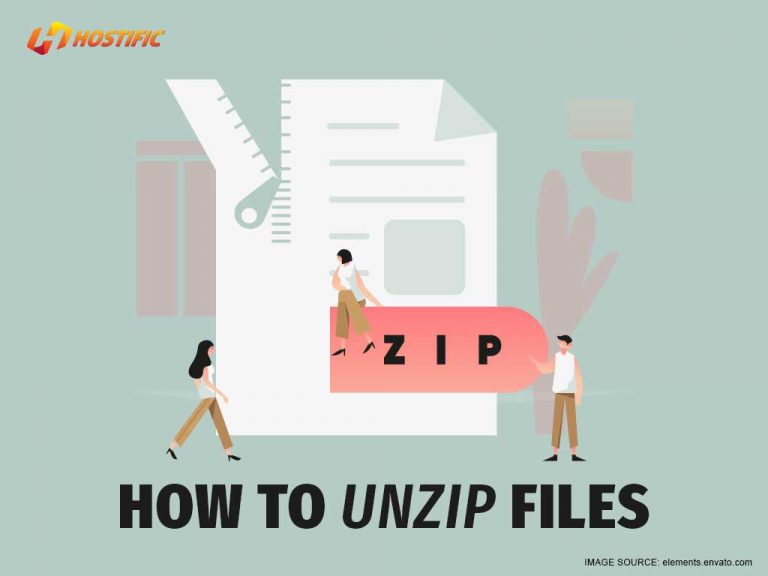Are you guilty of forgetting some tiny details once your website becomes operational? You know, the everyday foundational tasks that you need to do to keep your website operational? Tasks such as information management, hosting and web security. When you want to send and receive several files you have to ensure they are a certain size. This is because though the web may be a vast open space, there are limitations on how you interact with it. These restrictions are put in place for various reasons, including security and efficiency. Thankfully, you have options to zip and unzip files without losing quality data.
Table of Contents
Why Zip Files?
When you need to send multiple files across the Web, zipping them may be the best solution. This is because you may exceed the limit of your mail server. Zipping files means you compress them (or reduce their sizes) into one small package. This way, they are easier to send while still retaining all the data and quality. Zipped files are identified by the extension .zip.
This ability to maintain the integrity of the files during the reduction process is called lossless compression, an advantage of zipping files. And if you zip files, you must unzip them. This is the process of returning the files to their original condition. And here too, you have options on how to do this. Today, we introduce you to five of them ranging from built-in software to third party software.
Five Tips to Unzip Files
Irrespective of the method of choice, deleting the zipped folder after extraction is a good practice.
1. Unzipping files on Windows 10
- Download the zipped file (which will send it to the bottom of the screen)
- Click on the download to open ‘File Explorer’
- Locate the zipped file (usually found in ‘Downloads’ folder)
- Right-click on the zipped file and select ‘Extract All’
- ‘Extract Compressed (Zipped) Folders’ dialog box will open
- Select where you want the unzipped file to be stored by clicking on ‘Browse’
- Click ‘Extract’ to unzip files to the destination folder you just identified
2. Unzipping files on Mac
- Double click on the file to be unzipped (identified by a white icon with a zip on it and .zip extension)
- A file with the same name will appear within the same folder (has a blue folder icon and no .zip extension)
- Click the white arrow beside the unzipped file to see all the unzipped files
3. How to Unzip files on Android
To unzip files on an Android device, you will first need to:
- Install Files by Google (you can get it from the Google Play Store)
- Download the folder unto your Android device
Now that that is done, follow the steps below to unzip the files:
- Open Files by Google
- Click ‘Browse’ at the bottom center
- Locate the zipped file and tap on it once
- A pop-up window will appear that tells you what is in the file
- Tap ‘Extract’ to unzip the contents of the file
- Another pop-up will appear showing you all the files that have been extracted
- Click ‘Done’
For the most part, the three options that we have explored thus far can be called built-in extraction processes. Now we will look at third party extraction tools. As you guessed, a third party application is one that does not come with the device, nor one that was built by the designer for the device.
4. Extract Files with 7-Zip
One of the most talked-about archiving tools, 7-Zip. It is a free and open-source software that supports a variety of file formats. 7-Zip unpacks all major file formats and some uncommon ones as well as offers an encryption option.
After downloading the version that best suits your computer’s system, follow the steps below:
- Right-click on the file to be unzipped
- Scroll down to ‘7-Zip’ and mouse over it to open the second drop-down menu
- Scroll down to ‘Extract Here’ or any of the other two extraction options
- ‘Extract Here’ will create an unzipped version of the file within the same folder similar to what happens on a Mac
5. Open Files with PeaZip
Unlike 7-Zip, PeaZip is a cross-platform software. This allows it to work on both Windows and Linux. It is great for beginners and can function both as installable and non-installable (portable) application. You will find PeaZip easy to use if you are comfortable dragging and dropping files.
- Download the version that applies to you (if you want to use the installable version)
- Locate the file to be decompressed and double click it
- This should open a folder containing all the decompressed files
- Click ‘Extract’ to open a new window that asks for a location to put the unzipped files
- By default, the software will save them in the same folder as the zipped file
- Click ‘Extract All’ to unzip files
Done!
Conclusion
Your information is important, so protect it by using one of the many options shared with you today: mobile and desktop, installable and built-in, Windows and Mac OS. The ability to compress files without losing any data or affecting its quality is imperative for your business. Plus, you’ll get efficiency, as well as peace of mind.






